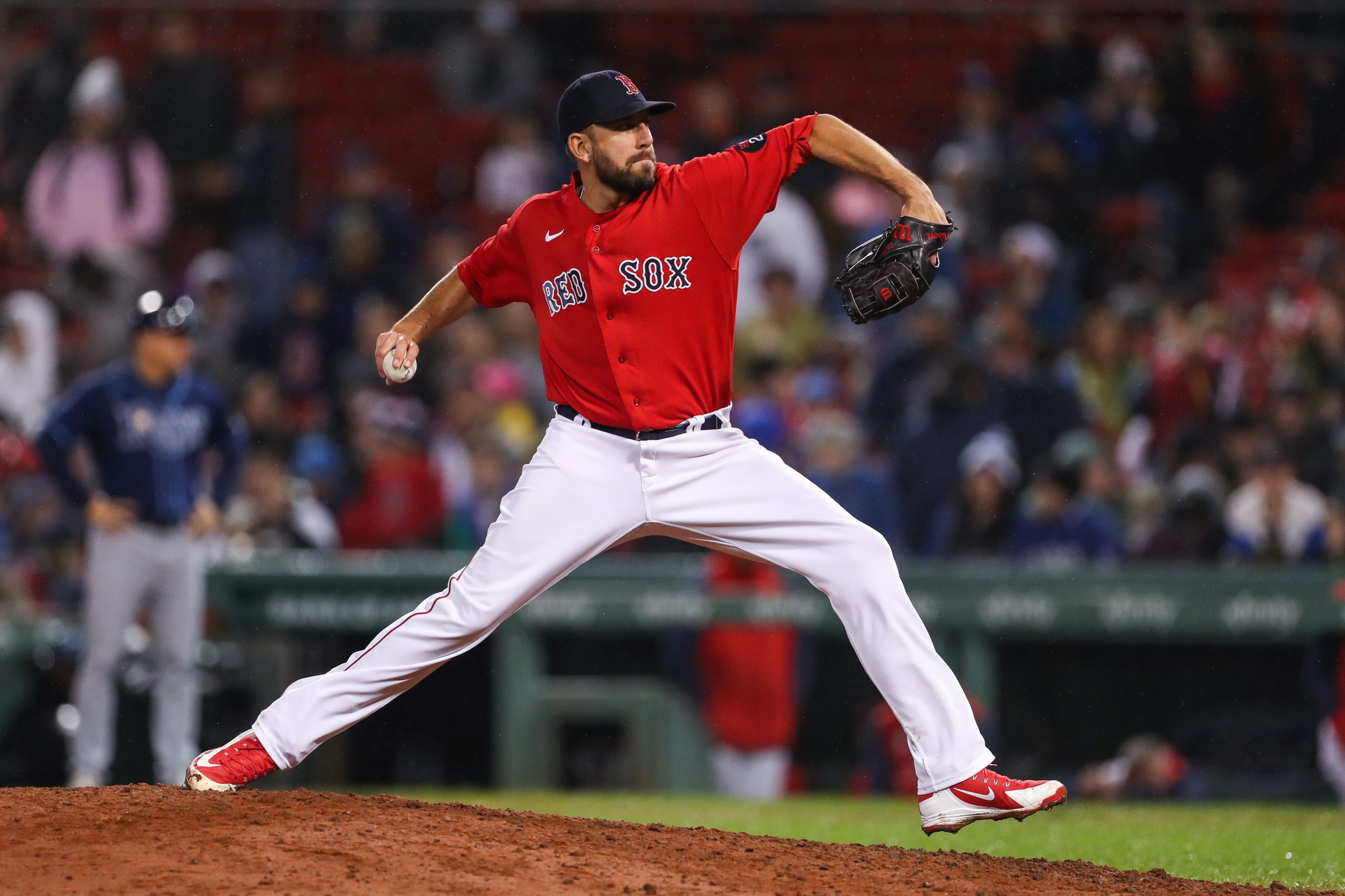The Boston Red Sox continued their bullpen revamp with two quietly consequential trades over the past week. After designating relief pitcher Matt Barnes for assignment, Boston decided to trade him for Miami Marlins veteran Richard Bleier.
Only days later, Chief Baseball Officer Chaim Bloom dealt the unproven Franklin German to the Chicago White Sox for the equally unproven Theo Denlinger. The Denlinger trade is more of a “wait-and-see” since neither he nor German features a big enough sample size to prove their worth.
The Barnes trade, however, is consequential for a few different reasons.
Let us analyze.
The Culture shift continues
The Barnes trade represents Bloom’s continual overhaul of the 2018 World Series team. With the departure of the nine-year veteran, only Chris Sale, Rafael Devers, and Ryan Brasier remain from that year’s roster. Pretty crazy considering how historical that run was (and how recent it happened).
The move also signifies Bloom’s perpetual remodeling of the culture that defined that World Series team, The Barnes move, along with the bizarrely executed Christian Vazquez trade last year, left many scratching their heads in disbelief. Both Vasquez and Barnes weren’t ready to leave, but Bloom pressed the button anyway.
Dealing Barnes proves that Bloom remains economical and committed to the short term when it comes to how he approaches the pitching staff. While minuscule, Bleier only makes $3.7 million this year compared to Barnes’ $8 million.
Matt Barnes is heading to the Marlins in a trade, sources tell @TheAthletic. Designated for assignment by Red Sox last week.
— Ken Rosenthal (@Ken_Rosenthal) January 30, 2023
The Matt Barnes Trade
The Matt Barnes trade is understandable considering his most recent mercurial output. There were times he looked like an All-Star and times when he was unfit for a big-league team.
Many mentioned Barnes’ increased workload over the past couple of years as a reason for his erratic production. This is a fair argument and illustrates Boston’s lack of bullpen depth over the past couple of years, especially in 2021, where Barnes carried much of the load as their best closer option.
The situation is murky, to say the least. While Barnes’ K% dropped significantly in 2022 (37 percent in 2021 to 19 percent last year), his appearances also plummeted due to a shoulder injury last summer. Barnes already confirmed that his increased workload as well as Boston’s insistence on bringing him in during inconvenient points of the game caused the inflammation. I understand why Barnes is irritated. I also see why he feels blindsided.
The flip side
The other argument, however, is the Matt Barnes trade needed to happen since the bullpen is now crowded, and ostensibly re-vamped. With Kenley Jansen and Joely Rodriguez part of the team now, it’s difficult to find a feasible role for Barnes in the bullpen. He’s not flexible enough to be a starter and he’s useless before the 7th inning. According to Baseball Reference, he only entered the game before the seventh inning 8 out of his 124 appearances between 2020-2022. With Jansen, Rodriguez, and Chris Martin taking those later innings, keeping Barnes would’ve felt redundant.
The lowdown on Bleier
With Bleier, the Red Sox add someone who brings some flexibility to their bullpen. In that same three-year time frame, the former Marlin appeared before the seventh inning 36 times and pitched in the fourth during a few instances.
This is key when considering a couple of different factors. One: while Bleier’s K rate is poor (4th percentile), his walk rate is magnificent (94th percentile). In other words, the move continues Bloom’s streak of finding bullpen guys who don’t surrender walks (Martin had the lowest BB/9 among relievers). Barnes’ walk rate, meanwhile, has not been above the 20th percentile over the past seven years.
Another key point: with Bleier, the Sox have another pitcher (Tanner Houck, too) who can enter the game at any point past the third inning and make an impact. This is important because the Red Sox lack late-inning starter depth and very few reliable middle relievers.
Overall
Bleier doesn’t have Barnes’ playoff-ready pedigree, but he does fit better within the bullpen’s current iteration, and he also provides middle reliever depth.
While unorthodox, Bloom’s approach to building this bullpen may pay off within the next few years. The Bleier move, as well as others in the bullpen, confirm that an identity is at least being fostered.
Main photo credits:
Paul Rutherford – USA Today Sports
Players mentioned:
Matt Barnes, Richard Bleier, Franklin German, Theo Denlinger, Chris Sale, Rafael Devers, Ryan Brasier, Christian Vazquez, Kenley Jansen, Joely Rodriguez, Chris Martin, Tanner Houck






